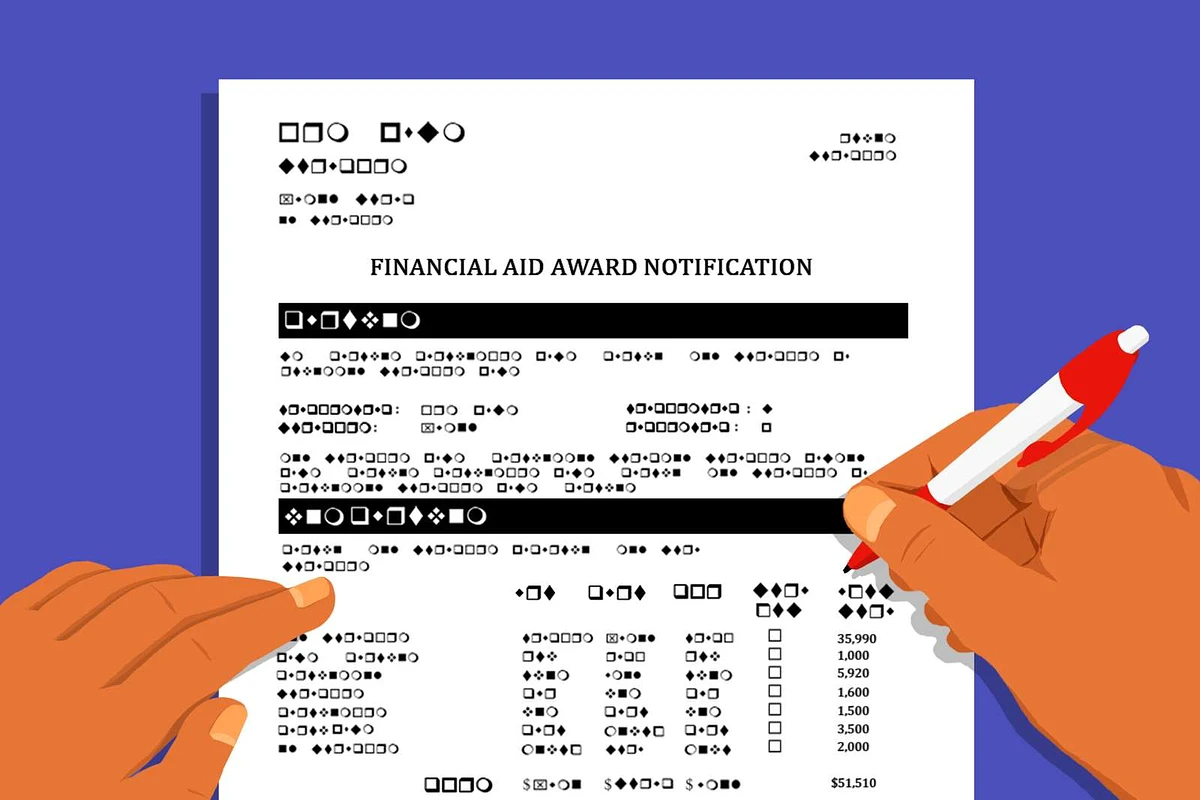by Karli Greenfield | Estimated Reading Time: 3 minutes
As FAFSA filing is picking up, and schools are beginning to receive FAFSA submissions, families are eagerly awaiting their student's first financial aid offers. Perhaps, your student has already received an offer, and now you are asking yourself, “How do I read this thing?” If you are asking this question, then you are not alone. Often, financial aid offers look very different from each institution. This includes differences in financial aid types and amounts, cost of attendance, procedures for accepting or denying aid, next steps, etc. If all of this is new to you, or maybe you need a refresher, here is a breakdown of the types of financial aid you can expect to see in your student’s financial aid offer(s):
Financial aid offers can typically be broken down into three distinct categories –
Grants & Scholarships:
Grants and scholarships represent financial aid that do not have to be repaid. This type of financial aid can come from various sources, and may include federal, state, institutional, and outside donor organizations. Grant and scholarship eligibility is often based on a student’s financial need, but may also be based on academic merit, talent, demographics, and other factors.
Work-Study:
Work-study represents funding that a student earns for work completed while enrolled in college. Even though work-study funding may appear on your student’s financial aid offer, these funds are typically paid to your student in the form of a paycheck, rather than being designated directly as a tuition payment to the institution like other financial aid. Work-study jobs may be limited, and students are not guaranteed a job on campus even if work-study funding appears on the financial aid offer. Work-study earnings are ideal for assisting with day-to-day student expenses.
Loans:
Loans represent financial aid that is borrowed and must be paid back with interest. It is important to remember that loans from federal, state, and other entities may hold different interest rates, origination fees, and payback agreements. If your student has completed the FAFSA, it is likely that their financial aid offer will include your student’s base federal student loan eligibility. Some loans are need-based, while others are based on a valid credit check. Both students and families have loan opportunities to help cover remaining direct and indirect costs.
Once you have received and reviewed your student’s financial aid offer(s), you may be asking, “What’s next?” Here are a few tips:
- Many schools require students to accept or decline financial aid offers. Review your school’s financial aid process to determine if this step is necessary for your student.
- Complete all other missing documents. Just because your student has received a financial aid offer, does not necessarily mean that the process is complete. Often, schools will include any remaining missing documents within the financial aid offer, or in subsequent email communications.
- Evaluate the cost. Some schools will include cost of attendance information in the financial aid offer, while others do not. If cost information is not easily accessible, reach out to your student’s Admissions or Financial Aid counselor to discuss the financial aid offer and cost information further. In addition, it is important to understand the difference between direct and indirect costs, and what your student is required to pay for.
Remember, Admissions and Financial Aid counselors are equipped to assist you with your questions. I often say, “All questions are worth asking in financial aid”. For those of you who have not yet received a financial aid offer, take heart, it will come.
Stay tuned for our next Ask an Expert article on understanding direct versus indirect cost of attendance, where we answer, “How do I determine my student’s net cost?”
Karli Greenfield is a higher education financial aid and enrollment professional. She holds more than 12 years of experience in financial aid, 11 NASFAA Professional Financial Aid Credentials, and years of active participation on the GA Association of Student Financial Aid Administrators board. She is passionate about working with students and families, and innovating college enrollment processes. Karli Greenfield, MBA | LinkedIn
Skip past news feed


